Non Fiction Book to Read to Start a Conservation
- In the upside-down world of 2020, books provided both a sanctuary for restless minds and a conduit for vicarious travel.
- The list beneath features a sample of the important literature on conservation and the environment released this year.
- Inclusion in this list does not imply Mongabay'southward endorsement of a book'southward content; the views in the books are those of the authors and not necessarily Mongabay.
Books accept provided a welcome refuge in 2020. The global pandemic has, in many cases, turned fifty-fifty routine travel into a risk not worth taking, and it has left many longing for the mean solar day when nosotros will once again ready off for a new destination. At the same time, this year has also been a time to reflect on the sense of place and what home means to each of us.
This year'south conservation book listing draws on those two themes. Satisfying the urge to light out into the unknown, several authors share tales and observations from the field. Others delve deeply into a single spot, examining its importance to a people and the way nosotros every bit a species fit into information technology, however uncomfortably. In the cease, each reinforces a lesson that the pandemic has laid blank: Pull a thread on the web of life and even afar strands will reverberate as a issue.
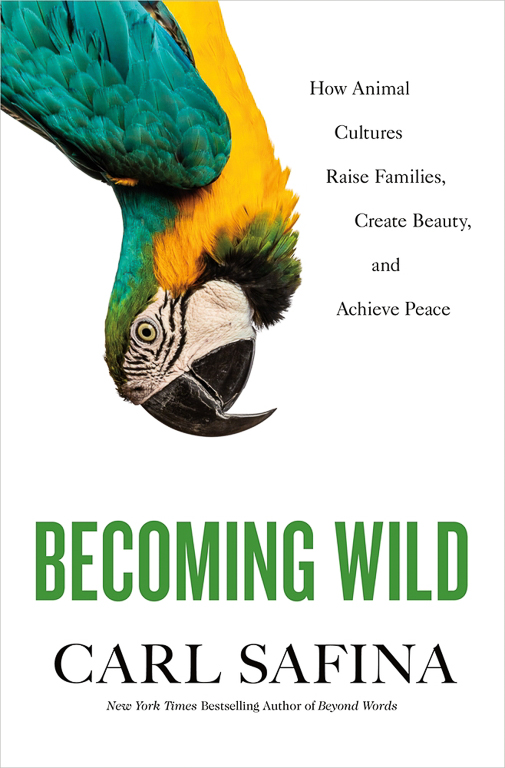
ane. Becoming Wild: How Creature Cultures Heighten Families, Create Dazzler and Accomplish Peace
By Carl Safina
Biologist Carl Safina has made a career of working on the front lines of conservation and and then imparting what he has learned in a way that makes us, his readers, take notice. Broken down into 3 parts, Becoming Wild explores the lives and cultures of 3 species: sperm whales, scarlet macaws, and chimpanzees.
Past turns fascinating, heartwarming and tragic, traveling with Safina equally a guide is engrossing. And, as y'all might suspect, at that place'due south an agenda here. Biodiversity, all the weird and wondrous speciation that evolution has molded from the building blocks of life on this planet, is under threat, now more then than at whatever other time since humans emerged from that same swirling mix of forces. But across the staggering loss of species and individual lifeforms currently underway, Safina demonstrates that the sum total of what we lose volition be far more than just a statistic if we don't work to protect the life that remains.
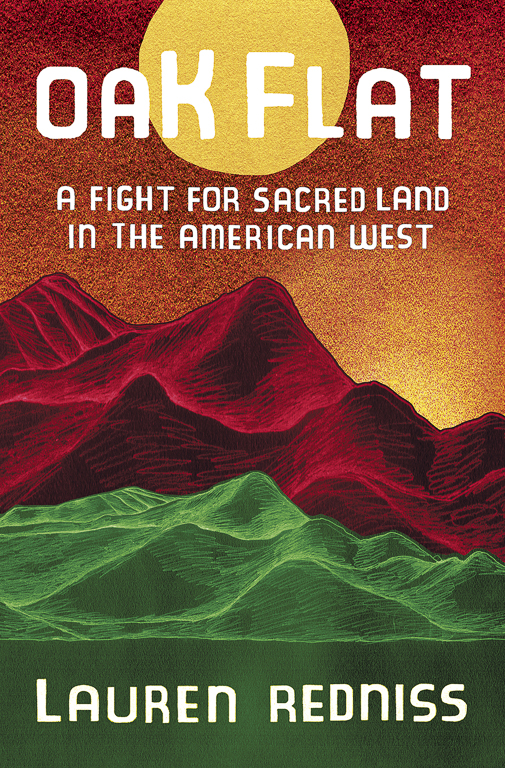
ii. Oak Flat
Past Lauren Redniss
Cutting across social justice, economical and environmental lines, Oak Flat chronicles the existent-life struggle of a family to protect sacred land from devastation subsequently the discovery of a copper deposit in the desert in the U.South. Southwest. The family lives on the San Carlos Apache Indian Reservation in Arizona and must contend with the substantial resources of a massive mining corporation, not to mention a set of laws that seem designed to put profits before people.
Told in the manner of a graphic novel, author and illustrator Lauren Redniss draws on her earnest reporting and skill every bit an artist to smoothen a light on the event, made all the more urgent because today the Apache of San Carlos are still fighting to protect their land.
3. Owls of the Eastern Water ice: A Quest to Find and Save the Globe's Largest Owl
By Jonathan Slaght
The Blakiston's fish owl doesn't brand conservation efforts on its behalf easy. Inhabiting the unforgiving mountains and forests of Russia's Far E, its dwindling numbers are threatened by logging and fishing in Primorye province.
Enter WCS scientist Jonathan Slaght and an intimate look at coming together the owl on its own turf. Merely as fascinating as the quirky bird he's pursuing are the characters who people Slaght's book, the hardy folk who at once correspond both a threat to the Blakiston's fish owl and invaluable accomplices in his mission to salvage the species.
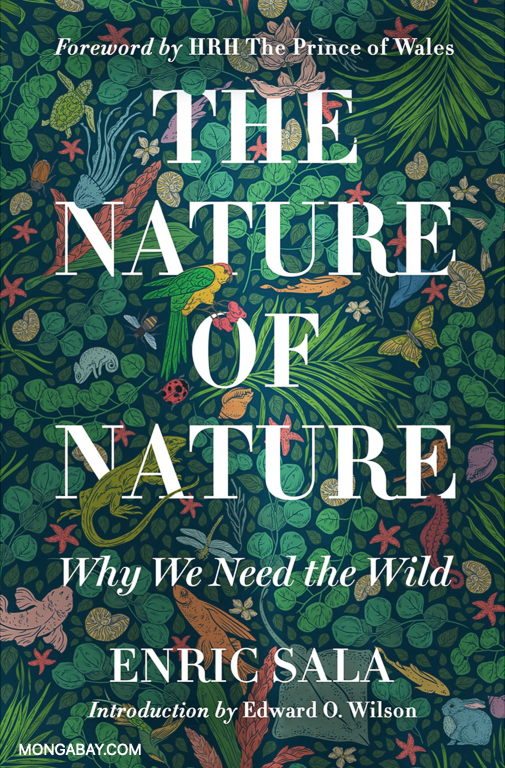
4. The Nature of Nature: Why We Need the Wild
By Enric Sala
Ecologist and National Geographic explorer-in-residence Enric Sala says he didn't want his career as a scientist to exist spent merely writing obituaries, cataloging the final days of and so many of the species he studies. The Nature of Nature is both an homage to the diversity of life on Earth and a warning of the steps we must accept to ensure it persists. Vividly told stories from decades of observing and probing the natural globe serve as a testimony to the interconnectivity that binds all life — including humans — together.
As Sala told Mongabay in an interview in August, "You lot tamper with nature in one part of the planet, and everyone suffers. That's why nosotros need to protect the wild."
5. The Medicine Wheel: Environmental Decision-making Procedure of Ethnic Peoples
By Michael E. Marchand, Kristiina A. Vogt, Rodney Cawston, John D. Tovey, John McCoy, Nancy Maryboy, Calvin T. Mukumoto, Daniel J. Vogt and Melody Starya Mobley
In the most academic-leaning volume to make this year'southward list, a grouping of predominantly Indigenous authors draw on the history, art and culture of Native societies from around the world with an eye toward how we might meliorate coexist with nature. Their aim is to provide a guide for the ways in which Indigenous thinking and science, too often viewed as working at cross purposes, can come together to solve environmental problems.

vi. Cottongrass Summertime
By Roy Dennis
Like many of the other authors on this list, ornithologist and conservationist Roy Dennis thankfully doesn't disguise his fascination with the intricacies of nature in Cottongrass Summer. The stories he tells have been gleaned from countless years of fieldwork and, at times, battles with the prevailing conservation establishment of the day. Still, the iconoclastic 80-twelvemonth-onetime carries on, offering a mensurate of hope in a book for a wilder and healthier planet.
Orangutan biologist Erik Meijaard, who reviewed Dennis's book for Mongabay in August, said, "[C]ynics amidst you turn away, this book is not for you. To me this book is nigh belief and love. Belief in a better world where wild animals and plants can in one case again thrive alongside people. And a deep love for the natural world effectually us."
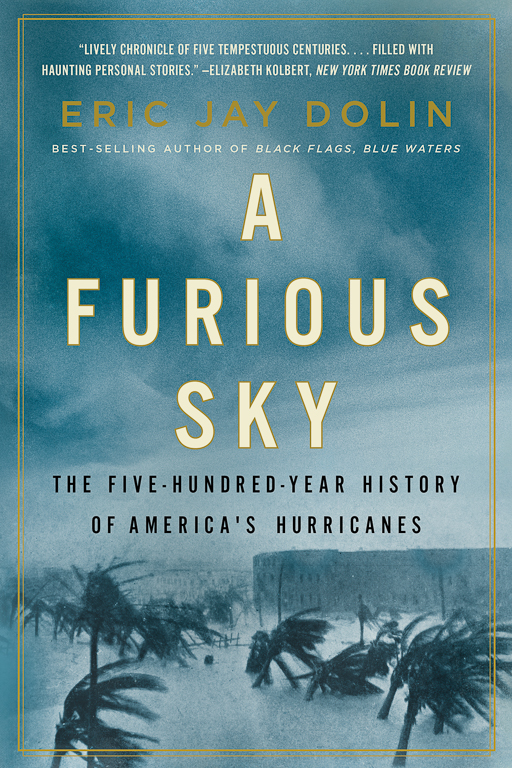
seven. A Furious Sky: The V-Hundred-Year History of America's Hurricanes
Past Eric Jay Dolin
In A Furious Sky, writer Eric Jay Dolin digs deep into the annals of humans' history with the monumental and subversive hurricane. Along the mode, he unearths a trove of engaging characters and entrancing struggles to observe a way to coexist with Earth'southward virtually powerful storms. In the terminate, nosotros find that, as the planet's climate changes, hurricanes will probable only grow stronger.

viii. Nature's All-time Promise: A New Arroyo to Conservation That Starts in Your Yard
By Douglas W. Tallamy
Many of the globe's ecology crises tin feel beyond the attain of human being problem solving. University of Delaware professor Douglas Tallamy takes a different tack, instead suggesting that the ideal place to brainstorm a necessary revolution is right where we live. Instead of depending on the seep of political compromise that'southward then often inadequate and short-sighted in addressing problems similar biodiversity loss, deforestation and climate change, Tallamy'south belief is that by starting small — creating hospitable habitats for native plants and insects in our backyards, for example — we tin can realize the dreams of the pantheon of conservation's great thinkers, Aldo Leopold, E.O. Wilson and Rachel Carson amidst them.

ix. Fathoms: The World in the Whale
By Rebecca Giggs
Over centuries, technological innovations, capitalist incentives and sheer grit led to many species of whales existence hunted to near extinction. But the moratorium on hunting whales that coalesced in the 1980s around the awe these animals inspire and the outrage so many felt at witnessing their slaughter helped bring them back from the brink. All merely a few of the earth's most fervent whale-hunting nations signed on, and the rebound in whale numbers seems like a cracking success. Simply in what kind of world have we ensured their survival?
That's one of the questions that writer Rebecca Giggs ponders in Fathoms, as she puts the survival of whales in the context of an increasing plastic-filled and polluted ocean, where warming waters and a paradoxically destructive ecotourism industry wait to confront them at every plough.
10. Soul Full of Coal Dust: A Fight for Breath and Justice in Appalachia
By Chris Hamby
2020 has proven, if there were whatever dubiety, that human and ecology wellness are inextricably linked. Investigative journalist Chris Hamby probed a paragon of this connection in Soul Total of Coal Dust. As the worldwide debate over the connected utilize of coal for steady simply muddy free energy product has taken center stage, the people who booty it from the ground have been fighting for their lives just behind the pall.
Hamby takes his readers to the mountains of Appalachia, the epicenter of U.S. coal product, where fortunes rise and fall with the industry itself. He details the David-and-Goliath struggle to have on "Big Coal" and bring much-needed assistance to the miners afflicted with black lung illness.

11. Baggage: Confessions of a Globe-trotting Hypochondriac
By Jeremy Hance
A 2022 Mongabay volume list wouldn't exist consummate without a nod to the site's longtime editor and senior correspondent, Jeremy Hance (likewise equally the site'southward first staff writer), who published his own memoir this twelvemonth. Hance has traveled the world in pursuit of the engaging environmental stories he's written for Mongabay, the Guardian, and Ensia, amidst other publications. He'south also lived with hypochondria and obsessive-compulsive disorder for decades, conditions that can make the dream of travel an anxiety-producing nightmare. Fortunately for his readers, they oasis't deterred him, and in Luggage, Hance recounts his voyages in a book that's as witty and self-effacing as it is poignant and instructive.
Mongabay'south year-in-review serial:
Oceans | Surround | Indonesian palm oil | Notable conservation deaths | Rainforests | Indonesia's surround | Madagascar'southward environs | Notable conservation books | Mongabay's almost popular
Imprint epitome of a humpback whale off the coast of the northeastern U.S. by John C. Cannon/Mongabay.
John Cannon is a staff writer at Mongabay. Notice him on Twitter: @johnccannon
FEEDBACK: Utilize this form to send a message to the author of this post. If you lot want to postal service a public comment, you can do that at the bottom of the page.
Source: https://news.mongabay.com/2020/12/11-notable-books-on-conservation-and-the-environment-published-in-2020/
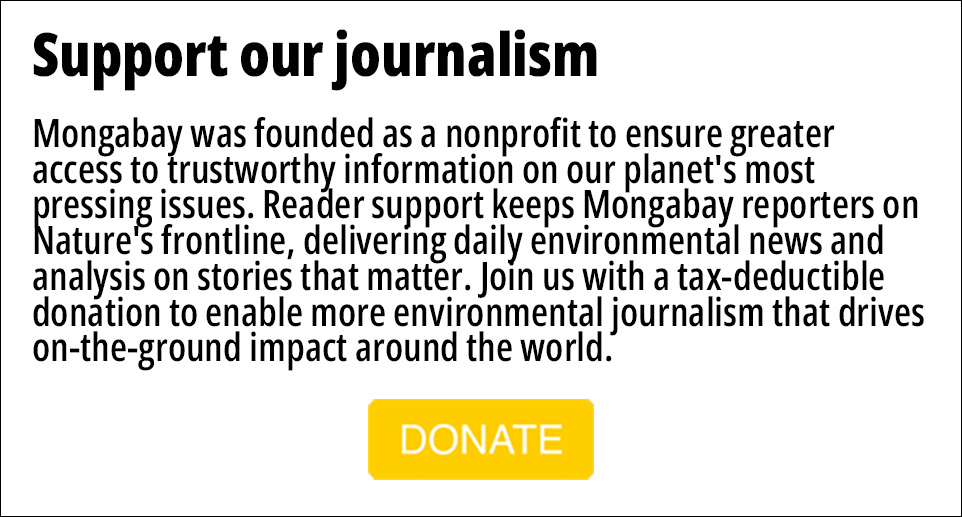
Post a Comment for "Non Fiction Book to Read to Start a Conservation"